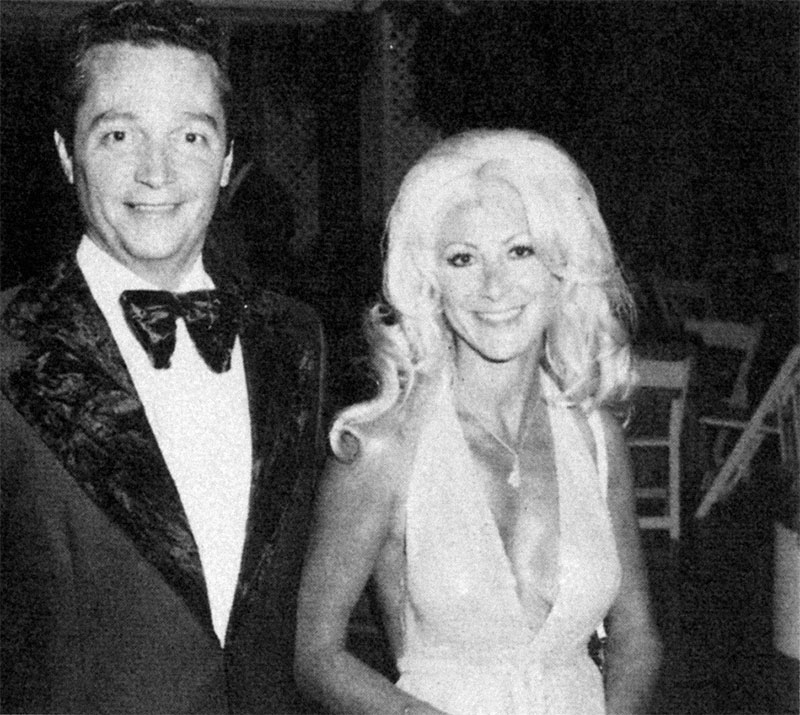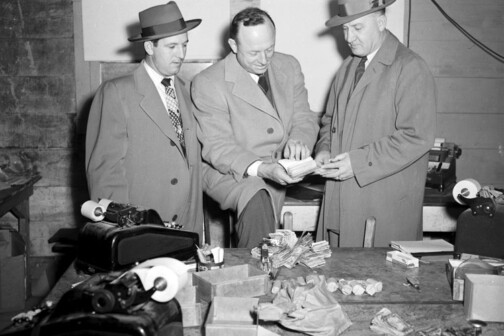In early 1977, this magazine asked: “Is Priscilla Davis’ story true?”
The murder trial for her husband, Cullen, was set to begin that February, when he would defend himself against allegations that he shot to death his 12-year-old stepdaughter and his estranged wife’s new live-in lover inside their mansion in Fort Worth. Priscilla was shot and wounded, too, and a family friend at the scene was left paralyzed.
Cullen and Priscilla Davis were well-known socialites—he a millionaire businessman, and she his bride. As Tom Stephenson wrote for us then, “As people tried to forget the killing of a 12-year-old girl, the murder became not a whodunit, but a gleeful trespass into the private lives of Fort Worth’s rich black sheep.”
There would be numerous magazine articles, books, and one made-for-TV vehicle starring Heather Locklear. The late Gary Cartwright wrote his own Texas Monthly story in the March 1977 issue, too, and it remains a great read. But Stephenson’s feels urgent and unsettled, a portrait of a town turned lurid, yes, but also an attempt at peeling apart the many narrative threads to try and find some semblance of truth. It begins and ends with Priscilla, first on her velvet couch and then on her newspaper-covered bed, trying to both explain herself and make sense of her new life.
The case largely hinged on her testimony. That she believed Cullen was the strange man in her home, wearing the woman’s wig holding the gun with a black plastic bag wrapped around his hands. They never found the murder weapon—or the wig, or the bag—and recovered no prints or bloody clothes from the scene: “Without tangible evidence, the prosecution must depend almost solely upon eyewitness accounts—essentially, the testimony of Priscilla.”
Stephenson’s story is one of the 50 greatest we’ve published. It doesn’t proclaim to know the truth, but does lay out how the puzzle could make sense—and how it might not. It also captures Fort Worth at a time when someone like Cullen Sr., the oilman, could confidently proclaim to Amon Carter, “You take Fort Worth, and I’ll take the rest of the world.”
Cullen was famously acquitted, and in the years since, his father-in-law admitted in a Star-Telegram report that he bribed an investigator within the Tarrant County District Attorney’s office during the original trial. Priscilla sued for wrongful death in 1986, but the matter ended in a hung jury. She died in 2001. Cullen was never tried for the murder of Stan Farr, the live-in boyfriend and former TCU basketball standout.
Cullen found God in the 1980s and went to work selling hand cream in Colleyville. He’s 90 today. As for the mansion: it was turned into a Mexican restaurant and then a wedding venue. In 2021, a housing developer acquired the property and the surrounding 250 or so acres and turned it into a 30-lot development of single-family homes. Cullen returned to the house for a WFAA segment that year, reflecting on how he snipped pages from home magazines and handed them over to an architect to design in 1972. There was also an underground tunnel that stretched more than 100 yards beyond the boundary of the home, for, Cullen said, “keeping stuff that made noise away from the house.”
He told reporter William Joy that he remembers little from his years living there, and he also cares little about the people who believe he got away with murder. “I didn’t care about that either,” he said. “They want to believe that, fine. What happened was unfortunate.
“History is history. Can’t change history.”
You can read Tom Stephenson’s story from March 1977 right here.
Author







